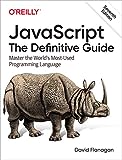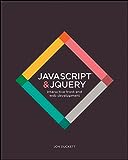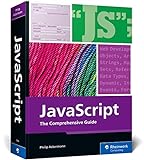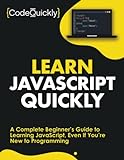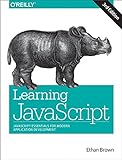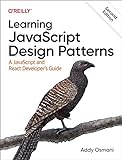GraphQL and SPARQL are both query languages used for retrieving data from databases, however, they are designed for different purposes.
GraphQL is a query language developed by Facebook in 2015 for querying APIs and retrieving specific data in a flexible and efficient manner. It allows clients to request only the data they need, reducing over-fetching and under-fetching of data. GraphQL is primarily used in web development for fetching data from backend servers.
SPARQL, on the other hand, is a query language for querying and manipulating data stored in RDF (Resource Description Framework) format. It is used for querying semantic data stored in triplestores and is commonly used in the Linked Data and Semantic Web domains. SPARQL is designed for querying linked data and making complex queries across multiple datasets.
In summary, the main difference between GraphQL and SPARQL is the purpose for which they are designed - GraphQL is for querying APIs in web development, while SPARQL is for querying semantic data stored in RDF format.
What is the difference between GraphQL subscriptions and queries?
GraphQL queries are used to fetch data from a server, while subscriptions are used to listen for real-time updates from a server.
Queries are used to request specific data from the server by providing a query string that describes the data that is needed. The server will then return the requested data in response to the query.
Subscriptions, on the other hand, allow clients to receive real-time updates from the server when certain events or changes occur. Clients can subscribe to specific events or data changes and will receive updates from the server whenever those events occur.
In summary, queries are used to fetch data from the server on-demand, while subscriptions allow clients to receive real-time updates from the server.
How to optimize SPARQL queries for performance?
- Use FILTER clauses judiciously: Avoid using complex filters in SPARQL queries as they may slow down query performance. Instead, try to simplify the filters or break them down into smaller, more manageable parts.
- Use LIMIT and OFFSET to minimize the amount of data retrieved: If you only need a subset of the data, use LIMIT and OFFSET to limit the number of results returned by the query. This can help reduce the amount of data that needs to be processed and improve performance.
- Use indexes: If your SPARQL endpoint supports indexes, make sure that appropriate indexes are set up for the properties and patterns used in your queries. This can significantly improve query performance by allowing the database to quickly locate relevant data.
- Use optional patterns wisely: Avoid using optional patterns unless they are necessary for your query. Optional patterns can significantly increase query complexity and slow down performance.
- Use UNION sparingly: Try to avoid using UNION in SPARQL queries unless absolutely necessary. Union queries are generally slower than standard queries as they require merging and deduplicating results.
- Use subqueries to break down complex queries: If you have a complex SPARQL query, consider breaking it down into smaller subqueries. This can help improve query performance by allowing the database to optimize the execution plan for each subquery.
- Cache query results: If your queries are frequently executed with the same parameters, consider caching the results to avoid repeating expensive query operations. This can help improve query performance, especially for queries that involve complex calculations or joins.
- Monitor query performance: Regularly monitor the performance of your SPARQL queries to identify bottlenecks and areas for optimization. Use query profiling tools to analyze query execution times and identify opportunities for improving performance.
How to use subscriptions in a GraphQL schema?
Subscriptions in a GraphQL schema allow clients to receive real-time updates when specific events occur on the server. Here is how you can use subscriptions in a GraphQL schema:
- Define a subscription type in your schema: First, you need to define a subscription type in your GraphQL schema. This type will specify the events that clients can subscribe to and the data that will be sent back to clients when the event occurs.
1 2 3 |
type Subscription { messageAdded(roomId: ID!): Message } |
- Implement a resolver for the subscription: Next, you need to implement a resolver function for the subscription type. This function will be responsible for subscribing to the event and sending real-time updates to subscribed clients.
1 2 3 4 5 6 7 8 9 |
const resolvers = { Subscription: { messageAdded: { subscribe: (_, { roomId }, { pubsub }) => { return pubsub.asyncIterator(`messageAdded_${roomId}`); }, }, }, }; |
- Publish events using a pubsub mechanism: To trigger the subscription and send real-time updates to clients, you need to publish events using a pubsub mechanism (e.g., Apollo PubSub).
1 2 3 |
pubsub.publish(`messageAdded_${roomId}`, { messageAdded: newMessage, }); |
- Subscribe to the event in the client application: Finally, in the client application, you can subscribe to the event using a GraphQL client library (e.g., Apollo Client) and receive real-time updates when the event occurs.
1 2 3 4 5 6 7 8 9 10 11 12 13 14 15 16 17 |
const SUBSCRIPTION_QUERY = gql` subscription { messageAdded { id content createdAt } } `; const subscription = client.subscribe({ query: SUBSCRIPTION_QUERY }); subscription.subscribe({ next(data) { console.log(data.data.messageAdded); }, }); |
By following these steps, you can implement subscriptions in your GraphQL schema and enable real-time updates for clients when specific events occur on the server.
What is the difference between GraphQL and gRPC?
GraphQL and gRPC are both technologies that are used for building APIs, but they have some key differences:
- Language: GraphQL is a query language for APIs that allows clients to request only the data they need. It is typically used with HTTP, and is language-agnostic. gRPC, on the other hand, is a remote procedure call (RPC) framework that uses HTTP/2 for transport, and Protocol Buffers for serialization. It is typically used with binary protocols, and relies on strongly typed message formats.
- Data format: GraphQL allows clients to request specific fields of data, and receive only the data they requested. This flexibility can be useful for scenarios where clients need different sets of data for each request. gRPC, on the other hand, typically uses Protocol Buffers to define the structure of the messages being sent between client and server. This can help to reduce the amount of data being sent over the wire, and can be more efficient for certain kinds of applications.
- Service definition: In gRPC, the service definition is typically defined using Protocol Buffers, which allows developers to define the API contract in a language-neutral way. This can make it easier to generate client and server code in multiple programming languages. GraphQL, on the other hand, uses a schema to define the types and queries available in the API. This schema can be introspected by clients to discover the capabilities of the API.
- Use cases: GraphQL is well-suited for scenarios where clients need to request specific fields of data, or for applications that need to support dynamic queries. gRPC is well-suited for scenarios where low latency and high performance are critical, and for applications that need strong typing and code generation capabilities.
In conclusion, the main difference between GraphQL and gRPC is their approach to defining APIs and handling data formats. GraphQL is more flexible and dynamic, while gRPC is more efficient and performant. The choice between the two technologies will depend on the specific requirements of the application being built.
What is the role of query variables in GraphQL?
Query variables in GraphQL allows the client to pass dynamic values to a GraphQL query. This means that instead of hardcoding values directly into the query itself, the client can provide values at runtime. This is particularly useful for passing parameters such as IDs, search terms, or filters to fetch specific data from the server without having to modify the query structure each time. Query variables make queries more flexible and reusable, enabling the client to make more targeted and specific data requests.
